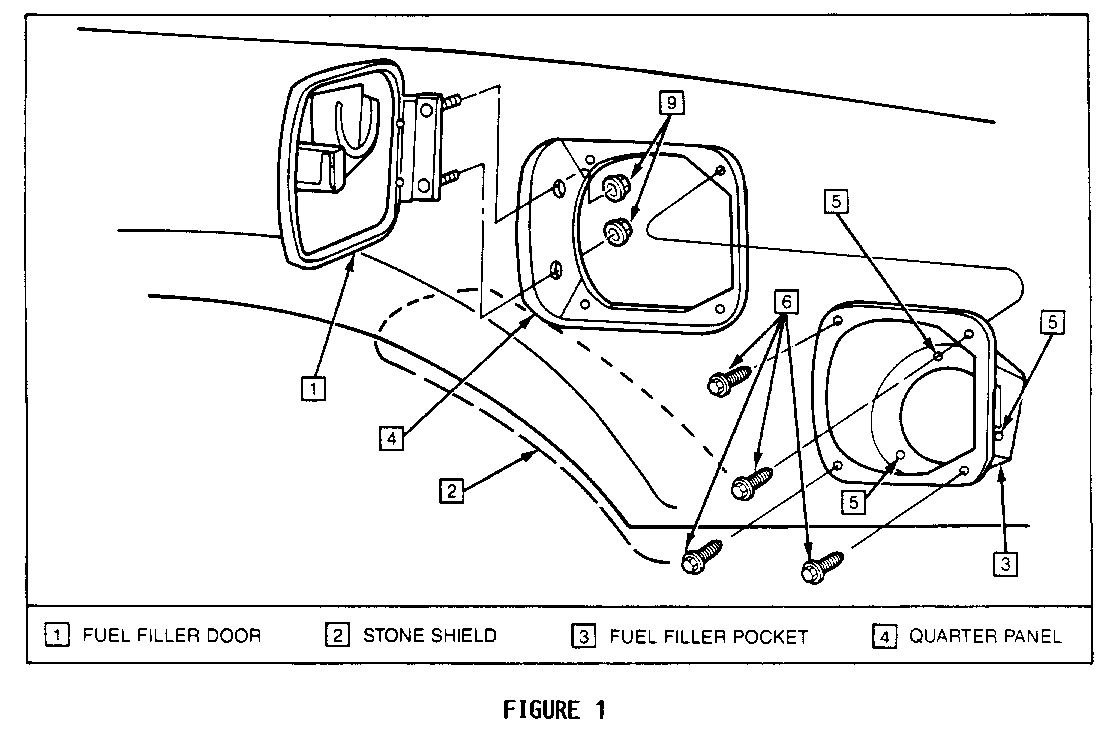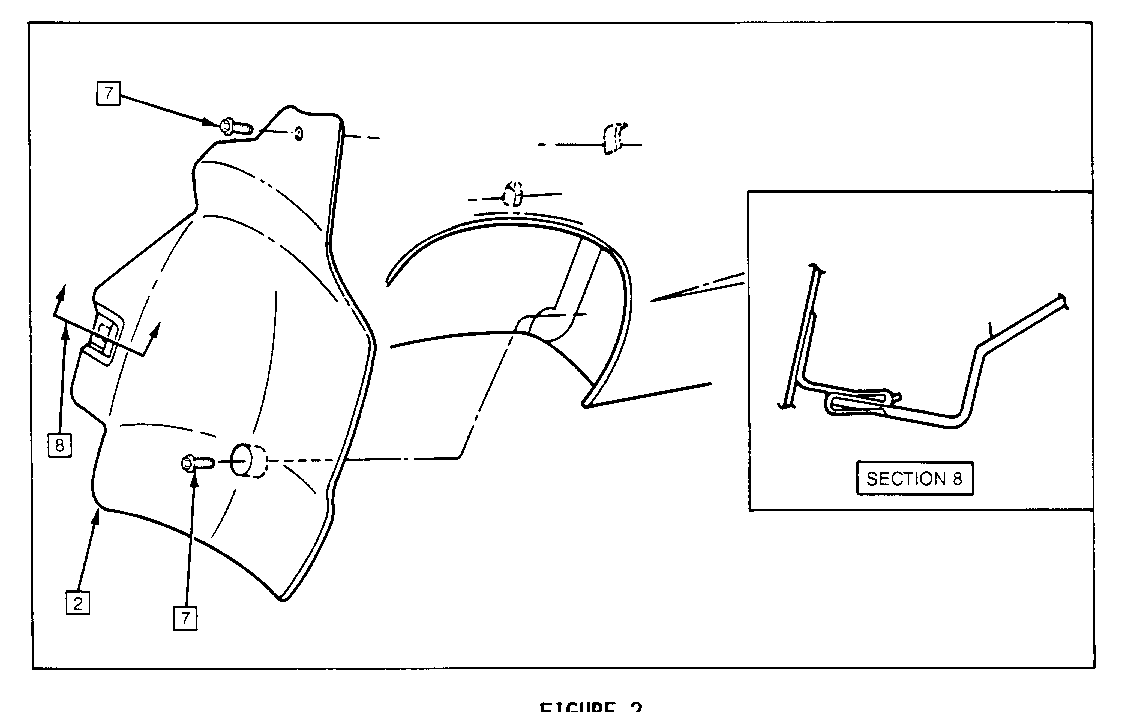FUEL FILLER DOOR LOW OR NO SPRING FORCE

SUBJECT: FUEL FILLER DOOR LOW OR NO SPRING FORCE (REPLACE WITH NEW DOOR)
VEHICLES AFFECTED: 1989 RIVIERA "E" SERIES"
Some 1989 Rivieras may experience a condition of fuel filler doors that would not spring open when the release was activated. This condition is caused by insufficient force of the opening spring.
To correct this condition the fuel filler door must be replaced with a new door, P/N 20726374, that contains dual opening springs and pins with Teflon coating. Painting of the fuel filler door to match body colour is required before reassembly.
The following service procedure should be followed when removing the fuel filler door:
1. Remove gas cap.
2. Remove three screws that hold the fuel filler pocket to fuel tank. Refer to Item 5, Figure 1.
3. Remove four screws that attach the fuel filler pocket to quarter panel. Refer to Item 6, Figure 1.
4. Remove two screws that join the stone shield to body at the wheelhouse (Refer to Item 7, Figure 2) and slide shield from clip (Refer to Item 8, Figure 2) at lower outboard support bracket.
5. Mark the location of the hinge to body sheet metal to assure proper alignment of the new door after reassembly then remove two screws. Refer to Item 9, Figure 1.
Reassembly of Fuel Filler Door:
1. Fuel filler door (Refer to Item 1, Figure 1): Position hinge assembly aligning marks made during removal and secure with two screws previously removed. Refer to Item 9, Figure 1.
2. Pocket (Refer to Item 3, Figure 1): Position pocket assembly to fuel filler opening in quarter panel, aligning four attaching holes and secure with screws previously removed. Refer to Item 6, Figure 1.
3. Fuel filler pipe to pocket (Refer to Item 3, Figure 1): Position pipe aligning three attaching holes and secure with screws previously removed. Refer to Item 5, Figure 1.
4. Stone shield (Refer to Item 2, Figure 2): Slide component into clip at lower outboard support bracket (Refer to Item 8, Figure 2). Align holes in shield to support bracket on wheelhouse and secure with two screws previously removed. Refer to Item 7, Figure 2.
Use most applicable Labour Operation and Time from the Canadian Labour Time Guide.


General Motors bulletins are intended for use by professional technicians, not a "do-it-yourselfer". They are written to inform those technicians of conditions that may occur on some vehicles, or to provide information that could assist in the proper service of a vehicle. Properly trained technicians have the equipment, tools, safety instructions and know-how to do a job properly and safely. If a condition is described, do not assume that the bulletin applies to your vehicle, or that your vehicle will have that condition. See a General Motors dealer servicing your brand of General Motors vehicle for information on whether your vehicle may benefit from the information.
